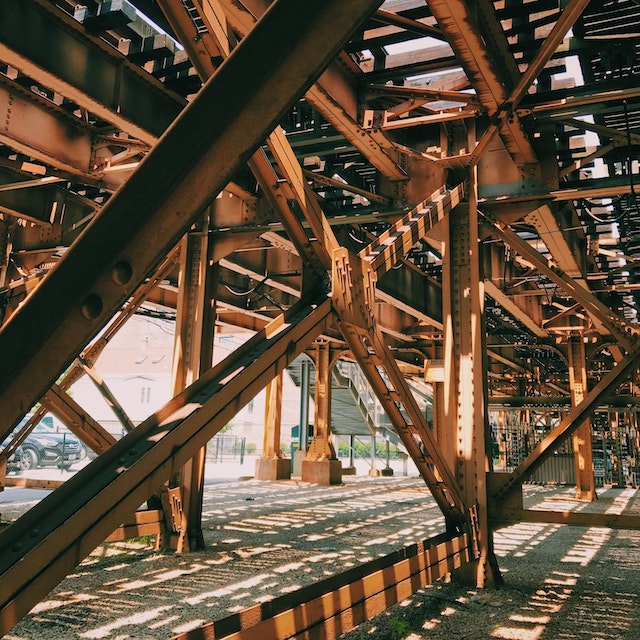Building Earthquake Resistant Structures for a Safer Future

Introduction and Importance
Earthquakes are some of the most destructive and devastating natural disasters that can occur. They are caused by the sudden release of energy from the Earth's crust, resulting in ground shaking, landslides, and in severe cases, tsunamis. Earthquakes can cause widespread damage to buildings, infrastructure, and communities, resulting in loss of life, injuries, and displacement of populations. The impact of earthquakes can be felt for years, with significant economic and social consequences.
Earthquake-resistant buildings or seismic resistant buildings are designed and constructed to withstand the forces generated by earthquakes, reducing the risk of collapse and minimizing damage. The key principles of earthquake-resistant design include ensuring that buildings are flexible and able to move with the ground during an earthquake, as well as ensuring that they are strong enough to resist the forces generated by seismic activity.
Seismic design is more important than ever before due to the growing global population, leading to an increase in urbanization and the construction of buildings in areas with higher seismic activity. Secondly, climate change is causing an increase in natural disasters, including earthquakes, which is making seismic design an urgent priority.Therefore, it is imperative that seismic design is taken seriously to ensure the safety of people and communities in earthquake-prone areas.
In this article, we will delve deeper into the principles behind earthquake-resistant design, including the materials and techniques used to create buildings that can withstand earthquakes. We will also examine some of the most innovative earthquake-resistant structures around the world and how they are changing the way we approach building design and construction in earthquake-prone areas. Additionally, we will discuss the importance of earthquake-resistant design in mitigating the impact of earthquakes on communities, and how it can help save lives and reduce economic damage.
Principles of Earthquake-resistant design
The key principles of earthquake-resistant design include:
- Flexibility
Buildings must be designed to be flexible so that they can move with the ground during an earthquake. This is achieved by creating a system of structural elements that can bend and deform without breaking. This helps to reduce the stresses on the building and prevent it from collapsing. - Strength
Buildings must also be designed to be strong enough to resist the forces generated by seismic activity. This is achieved by using materials that can withstand the stresses and strains imposed by an earthquake. Steel and reinforced concrete are commonly used for seismic-resistant construction. - Damping
Damping refers to the ability of a building to absorb and dissipate the energy generated by seismic activity. This is achieved by incorporating damping systems into the building's structure, such as shock absorbers or viscous fluid dampers. These systems help to reduce the amount of energy transferred to the building, thereby reducing the risk of damage. - Redundancy
Buildings must also be designed to have redundancy in their structural systems. This means that there are multiple load paths in the building that can support the weight of the structure in case of damage to any one element. This helps to prevent collapse and allows the building to remain standing even if some parts of it are damaged. - Regularity
Regularity refers to the uniformity of the building's structural elements. Buildings that have irregular shapes or structural elements are more likely to experience stress concentrations during an earthquake, increasing the risk of damage. Regularly shaped buildings with uniform structural elements are more resistant to seismic activity. - Retrofitting
Retrofitting involves modifying existing buildings to make them more earthquake-resistant. This may involve adding additional structural elements or strengthening existing ones.
By incorporating these key principles into earthquake-resistant design, we can improve the safety and resilience of buildings in earthquake-prone areas. It is important to note that earthquake-resistant design is an evolving field, and new technologies and techniques are constantly being developed to improve the safety and resilience of buildings.
Different techniques used in Earthquake-Resistant design
Base Isolation
Base isolation technique involves placing the building on flexible bearings or isolators that allow it to move independently of the ground. This movement helps to absorb and dissipate the energy generated by the earthquake, reducing the stresses on the building and preventing damage.
During an earthquake, the ground moves back and forth, causing the building to sway. With base isolation, the building is able to move on the flexible bearings, reducing the forces transmitted to the building. The bearings are designed to provide both vertical and horizontal support, and can be tailored to the specific requirements of the building.
Base isolation can be used in a wide range of building types, from single-family homes to high-rise buildings. It can be particularly effective in areas with high seismic activity, where the risk of damage and collapse is greatest.
Cross-Bracing

Cross-bracing is a technique used in earthquake-resistant design to increase the lateral stiffness and strength of a building. It involves adding diagonal braces to the building's structure to create a stronger and more rigid system. The braces are typically placed in a crosshatch pattern, and help to distribute the forces generated by seismic activity.
There are several types of cross-bracing, including X-bracing, V-bracing, and K-bracing. X-bracing is the most common type and involves adding diagonal braces in a crisscross pattern. V-bracing involves adding diagonal braces in a V-shape, while K-bracing involves adding diagonal braces in a K-shape.
The braces are typically made of steel, and can be attached to the building's structure in a variety of ways. The braces are designed to resist both tension and compression forces, and help to distribute these forces throughout the building's structure.
Damping Systems

A damping system reduces the amount of energy that a building absorbs during an earthquake. It involves the use of special devices or systems that dissipate the energy generated by seismic activity, reducing the forces transmitted to the building and preventing damage.
There are several types of damping systems used in earthquake-resistant design, including:
- Viscoelastic Dampers: Viscoelastic dampers consist of a material that deforms and absorbs energy when subjected to vibrations. These dampers can be installed at various locations in a building, such as between floors or within the structural members themselves.
- Friction Dampers: Friction dampers use a sliding or rotating mechanism to dissipate energy during an earthquake. They work by converting the kinetic energy generated by the building's movement into heat energy, which is then dissipated into the surrounding environment.
- Tuned Mass Dampers: Tuned mass dampers are typically used in high-rise buildings and consist of a mass that is suspended within the building's structure. The mass is tuned to vibrate at a specific frequency, which helps to counteract the vibrations caused by an earthquake.
Materials used in Seismic Design
There are several materials that are commonly used in earthquake-resistant design. These materials are selected for their ability to withstand seismic activity and to minimize damage to buildings and structures during earthquakes. Some of the commonly used materials are:
- Reinforced Concrete: Reinforced concrete is a widely used material in earthquake-resistant design. It is strong and durable, and can be reinforced with steel to increase its tensile strength. Reinforced concrete structures can withstand significant seismic activity, and can be designed to absorb and distribute the energy generated by an earthquake.
- Steel: Steel is also a popular material for earthquake-resistant design. It is strong, ductile, and has a high strength-to-weight ratio, making it ideal for use in tall buildings and other structures. Steel structures can be designed to bend and deform during an earthquake, which helps to absorb the energy generated by seismic activity.
- Composites: Composite materials such as fiber-reinforced polymers (FRP) are becoming increasingly popular in earthquake-resistant design. These materials are lightweight, strong, and corrosion-resistant, and can be used to reinforce existing structures or to construct new buildings. For more information on FRP composites, check out this article.
The selection of materials for earthquake-resistant design depends on a variety of factors, including the type and severity of seismic activity in the region, the type of structure being designed, and the budget and resources available for construction. By selecting the appropriate materials and designing structures to withstand seismic activity, engineers and architects can help to protect lives and property during earthquakes.
Conclusion
The importance of seismic-resistant structures cannot be overemphasized. The devastation caused by earthquakes can have a profound impact on the lives of individuals and entire communities. By implementing earthquake-resistant design principles and using appropriate materials and techniques, we can help to mitigate the damage caused by seismic activity and protect lives and property.
At the same time, we must also recognize that the construction of seismic-resistant structures is not a one-time solution. Buildings and infrastructure must be regularly inspected and maintained to ensure that they continue to meet safety standards and remain resilient in the face of seismic activity.
In the end, the goal of earthquake-resistant design is not only to minimize damage and loss of life during earthquakes but to build a more resilient and sustainable future for our communities. By working together to design and construct safe and resilient buildings and infrastructure, we can help to create a better future for ourselves and for generations to come.